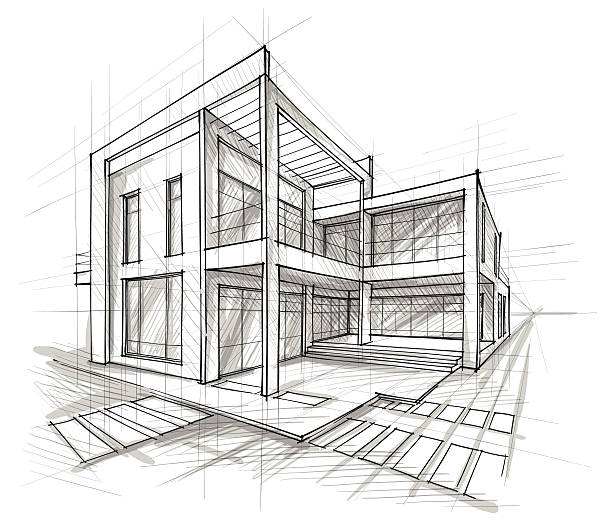Leading Factors to Pick CDA Architects for Your Residential or Commercial Designs
Leading Factors to Pick CDA Architects for Your Residential or Commercial Designs
Blog Article
The Impact of Technical Innovations on the Style Practices of Contemporary Architects
The rapid evolution of technological devices has actually substantially improved the style landscape for contemporary architects, promoting unmatched levels of innovation and sustainability. Discovering these dynamics reveals a nuanced interaction in between innovation and conventional layout methods, triggering a better evaluation of what the future holds for architectural methods.
Evolution of Architectural Devices
Exactly how have architectural devices changed the style and building processes over the centuries? The development of architectural tools has dramatically influenced the performance, accuracy, and imagination of design and construction.
With the advent of the Renaissance, the intro of the compass and the protractor noted a crucial change. These devices made it possible for designers to accomplish better accuracy in their styles, helping with the development of even more complex and in proportion buildings. The Industrial Change further revolutionized building experiment the introduction of mechanical tools and products, enabling for larger and extra ambitious tasks.
In the 20th century, the advancement of computer-aided design (CAD) software program transformed the landscape once more, supplying architects with extraordinary capabilities in modeling and visualization. Today, progressed tools such as Structure Information Modeling (BIM) and parametric layout software proceed to push the borders of architectural advancement, enabling a much more integrated technique to design and building procedures.
Enhanced Cooperation in Design
As innovation proceeds to develop, boosted collaboration in layout has ended up being a cornerstone of contemporary architectural method. The assimilation of digital tools such as Structure Details Modeling (BIM), cloud-based platforms, and progressed visualization software program has transformed the means architects, engineers, and stakeholders engage throughout the layout process. These tools promote real-time communication, permitting teams to share ideas, alterations, and feedback instantly, no matter geographical area.

Additionally, interdisciplinary collaboration has been structured via these technical innovations, making it possible for engineers to function a lot more carefully with other professionals, such as metropolitan coordinators and ecological professionals. The outcome is an extra natural technique to make that takes into consideration numerous perspectives and competence. Eventually, improved cooperation in layout is not just a trend; it is important for producing ingenious, practical, and cosmetically pleasing architecture in a progressively complicated globe.
Sustainability Through Modern Technology
Sustainability in design has increasingly ended up being intertwined with technological innovation, driving the market towards eco responsible methods - cda architects. Contemporary engineers are leveraging advanced innovations to decrease environmental effect while boosting the performance of buildings. One famous instance is making use of Building Details Modeling (BIM), which allows for accurate preparation and source appropriation, decreasing waste throughout building and construction and promoting energy efficiency throughout a building's lifecycle
Additionally, clever products and energy-efficient systems are being integrated into styles to enhance source use. Technologies such as solar batteries and eco-friendly roof systems harness renewable resource resources, adding to reduced carbon footprints. Furthermore, the application of expert system in design processes allows engineers to simulate and assess power consumption, assisting choices towards more sustainable end results.
The integration of sustainable modern technologies not only aligns with worldwide ecological objectives but likewise fulfills an enhancing demand from customers for environmentally friendly options. As architects accept these innovations, the focus changes towards producing rooms that are not just aesthetically pleasing but likewise functionally sustainable, therefore redefining the criteria of modern architecture. This way, modern technology serves as a stimulant for sustainability, making it possible for designers to design structures that respect and boost the all-natural atmosphere.
Challenges in Application
While technical innovations in architecture hold fantastic assurance for boosting sustainability, their application usually comes across considerable challenges - cda architects. One main obstacle is the steep learning curve associated with brand-new technologies. Designers and building specialists may call for substantial training to effectively use innovative software application and devices, which can delay job timelines and increase expenses
In addition, the combination of arising technologies, such as Structure Details anchor Modeling (BIM) and sustainable products, frequently demands collaboration throughout multidisciplinary teams. This partnership can be prevented by differences in proficiency, process, and interaction styles, causing potential disputes and inefficiencies.
Financial constraints even more make complex the adoption of cutting-edge technologies. Several architectural firms, especially smaller sized ones, might do not have the resources to invest in sophisticated devices, limiting their ability to take on bigger companies that can manage such investments.
Moreover, regulative structures and building ordinance may not keep pace web with technological innovations, creating uncertainty and prospective compliance concerns. This obstacle can inhibit architects from fully accepting brand-new technologies, as the threat of non-compliance may outweigh the benefits. Resolving these implementation difficulties is critical for the effective assimilation of technological advancements in modern building methods.
Future Patterns in Style
The challenges connected with the execution of brand-new modern technologies in architecture have motivated a reevaluation of future fads within the sector. As engineers browse concerns such as sustainability, urbanization, and social equity, they are increasingly adopting cutting-edge technologies to enhance design effectiveness and environmental performance.
One popular fad is the combination of artificial intelligence (AI) in the design process. AI tools can evaluate large datasets to inform design decisions, improving both imagination and performance. Similarly, Structure Info Modeling (BIM) continues to progress, enabling real-time cooperation among stakeholders and promoting streamlined task management.
Sustainable style techniques are also getting energy, with architects concentrating on flexible reuse and regenerative design principles that decrease resource usage and waste. The unification of smart materials and eco-friendly energy resources will certainly even more boost the strength of buildings despite environment change.

Conclusion
Technical improvements have dramatically improved architectural layout methods, facilitating improved precision, cooperation, and sustainability. The combination of tools such as Structure Info redirected here Modeling and parametric design software program, alongside fabricated knowledge and smart products, equips architects to attend to complicated obstacles much more effectively.
Report this page